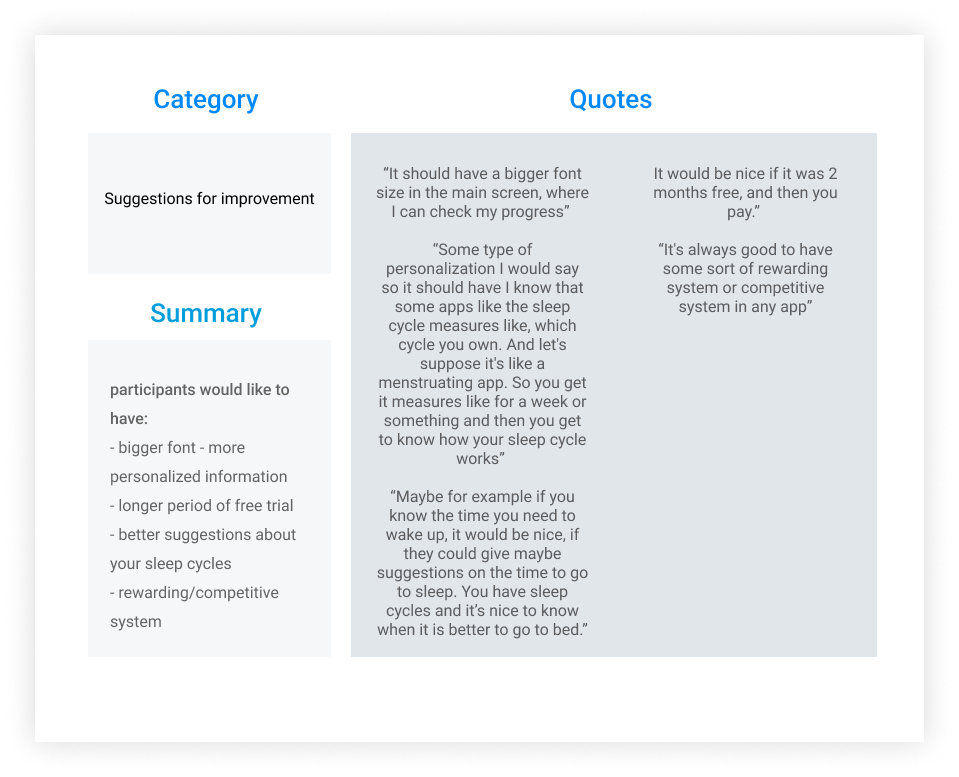Sleep Helper
Case Study
ROLE
Product Designer
TIMELINE
May 2022 - Sept 2022
TEAM
Project Manager, Me
SKILLS/TOOLS
User Research, User Testing, Ideation, Prototyping, Figma

PROJECT BRIEF
Helping create positive sleep habits.
Case Study
ROLE
Product Designer
TIMELINE
May 2022 - Sept 2022
TEAM
Project Manager, Me
SKILLS/TOOLS
User Research, User Testing, Ideation, Prototyping, Figma
OVERVIEW
As a Psychology undergrad, one of the things that has always resonated with me is the importance of sleep on quality of life. Likewise as a Masters student, I experienced firsthand the effects of bad sleep habits and heard of many similar cases from friends and family. Armed with this knowledge I was motivated to start looking into the importance of sleep and the factors that can affect sleep quality.
After analyzing and gathering conclusions from my research and interviews I decided I wanted to help people like myself that struggle with breaking negative sleep patterns by creating a platform that helps users create and maintain positive sleep habits, leading to higher quality sleep, increased energy, and improved overall well-being.
This goal is based on the following research findings:
IDEATION
I started by conducting general research on sleep and sleep habits, and doing a series of interviews with individuals struggling to start and maintain healthy sleep habits, with many of them possibly already trying to implement different healthy sleep practices in their daily routine.
I conducted semi-structured interviews with a help of a guide, which consists of 3 parts:

For the purpose of reaching the target audience, six individuals were selected with the help of a google screener.
The method of data analysis used was interpretive qualitative methodology, in which the analysis of the interview transcripts was carried out, taking place in 3 stages according to the classification of Miles and Haberman:





From this analysis the average sleep habits, reasons for poor sleep, techniques for improving sleep habits, various popular sleep apps and their benefits and drawbacks were discovered.
The finding that many people struggle to get enough quality sleep has various causes and impacts.
Causes:
Impact:

The data gathered allowed me to assess the pain points and needs of the target user and create a persona and affinity map based on these findings.

RESULT
After further assessing the needs and pains of individuals struggling with developing and maintaing healthy sleep habits, I found the solution in A platform that provides personalized recommendations, access to sleep experts, and a personalized schedule to help users improve their sleep quality.
After sketching some low-fidelity screens, I created high-fidelity explorations while keeping the visuals consistent with the brand identity.
REFLECTION